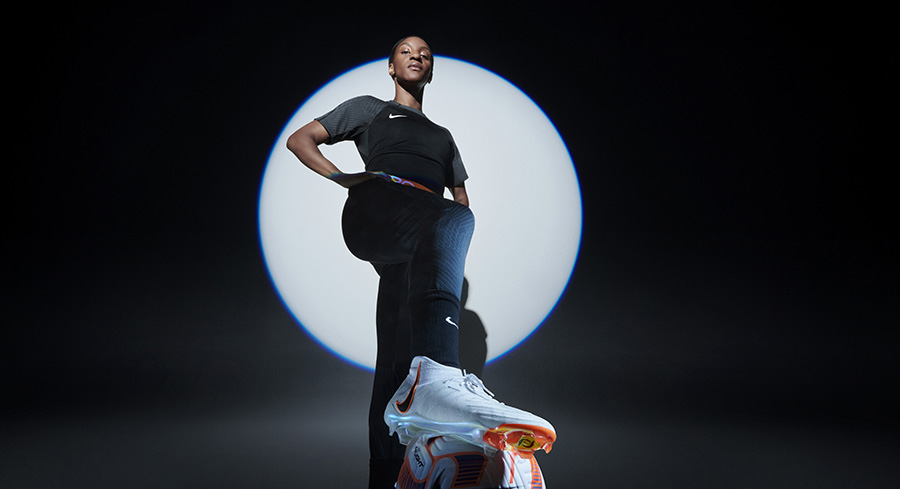Recent survey data from analysts at Citi found that Nike’s consumer appeal remained vibrant in North America, with the brand being the most-popular athletic brand in the region.
Among Chinese consumers surveyed by Citi, Nike generated sequential improvement in consumer sentiment and held a slight lead as the favorite brand in the country.
Citi surveyed 1,600 North American and 1,000 Chinese consumers in late May/early June to gauge the momentum of the Nike brand and other Western and Chinese brands in North America and Greater China, with the survey findings compared to similar surveys the company had taken in March and last December.
“In North America, our survey results indicate that the Nike brand remains in good standing with the consumer, getting top ranks in both NPS [net promoter score] and intent to purchase,” wrote Citi’s analyst Paul Lejuez in the report.
On NPS, which measures a customer’s willingness to recommend a company’s products or services to others, Nike retained the highest NPS of all brands surveyed in the North American survey, at 40 percent, versus 44 percent in March.
Nike was followed by Under Armour, 32 percent, down from +36 percent in March; Jordan, 32 percent, versus 26 percent in March; Adidas, 31 percent, in line with March; New Balance, 30 percent, +31 percent in March; Puma, 21 percent, +22 percent in March; Converse, 16 percent, +33 percent in March; Asics, 14 percent, +33 percent in March; Reebok, 13 percent, +22 percent in March; Hoka, 10 percent, +6 percent in March; and On, negative 8 percent, +7 percent in March.
Survey participants chose one brand, Nike, from a list of athletic brands when asked which they would consider purchasing at 32 percent, similar to March. Nike was followed by Adidas, 13 percent, down from 15 percent in March; Under Armour, 11 percent, versus 13 percent in March; and New Balance, 10 percent, up from 9 percent in March.
Rounding out the athletic brands based on purchase intent, respondents chose Jordan, 7 percent; Puma and Reebok 5 percent; Converse 4 percent; Asics 3 percent; Hoka 1 percent; and On zero percent.
On the macro front, Citi’s survey results pointed to a stable North American environment, showing that inflation is modestly “less bad” for consumers.
When looking at disposable income, 35 percent of respondents in the North American survey indicated they have seen their disposable income get somewhat or significantly worse over the past 12 months, down versus 44 percent in March, with many of those respondents indicating no change in their disposable income. However, only 17 percent in both June and March Citi surveys said their disposable income had improved somewhat or significantly. Results also indicated that consumers feel “less bad” about their disposable income in the future.
The survey of Chinese consumers indicated that Nike is in “good standing” with the Chinese consumer, which Citi said appears “driven by improved sentiment toward foreign brands amid the diminishing impact of Xinjiang cotton incident.”
In early 2021, Nike, Adidas, H&M, and other major Western apparel brands faced boycotts in China over past comments the fashion brands had made about labor conditions in Xinjiang’s Western region, home to Muslim Uighurs.
Similar to the North American survey, Nike scored the highest NPS score in China, at 45 percent, up slightly from 44 percent in the March survey. Nike was followed closely by Puma, which had an NPS score of 44; then Asics, 42 percent; Adidas and New Balance, both 38 percent; Reebok, 36 percent; Li Ning, Xstep, Jordan, and Converse, at 35 percent; Anta and Under Armour at 32 percent; Peak, 30 percent; and 360 Degrees, 22 percent.
When Chinese respondents were asked which athletic brands they would consider purchasing next (respondents were limited to picking one brand), Nike topped the list at 18 percent in June, down from 23 percent in March. Adidas followed at 16 percent, up slightly from 15 percent in March. Li Ning was at 10 percent in June, down from 12 percent in March.
Among the rest, Anta was at 8 percent; Xtep, 6 percent; Jordan and Under Armour, 5 percent; New Balance, Asics, Puma and Converse, 4 percent; Peak and Reebok, 3 percent; and 360 Degrees, 2 percent.
Citi’s survey showed that Chinese consumers felt more confident about their disposable income over the last three months. In June, 60 percent of respondents said their disposable income was significantly better or somewhat better versus 46 percent that responded that way in March and 22 percent in December.
The promotional environment in China ticked up since last quarter but to a more normal level tied to better inventory availability in the market relative to three months ago when Nike and other brands were staying lean on inventory amid uncertainties. Citi noted, “This is consistent with the results we’ve seen from Pou Sheng (a subsidiary of Yue Yuen and a big retail partner to Nike and Adidas in the region) over the last three months. Pou Sheng’s retail sales were up 28 percent in the March through May period vs. last qtr (Dec’ 22-Feb’ 23) when Pou Sheng’s sales were down 10 percent.”
Photo courtesy Nike
















